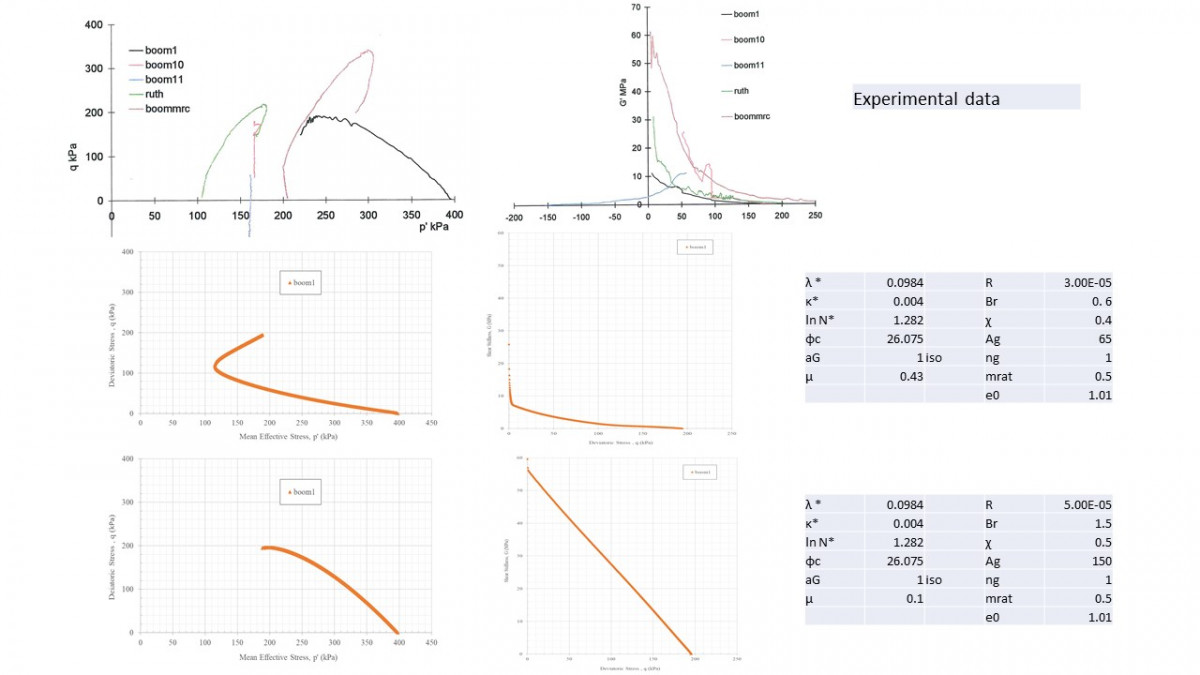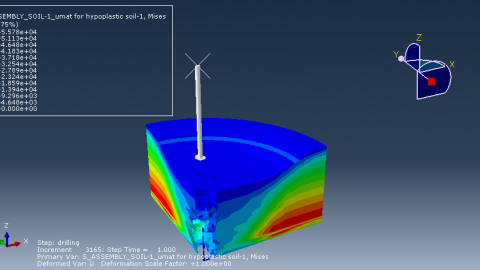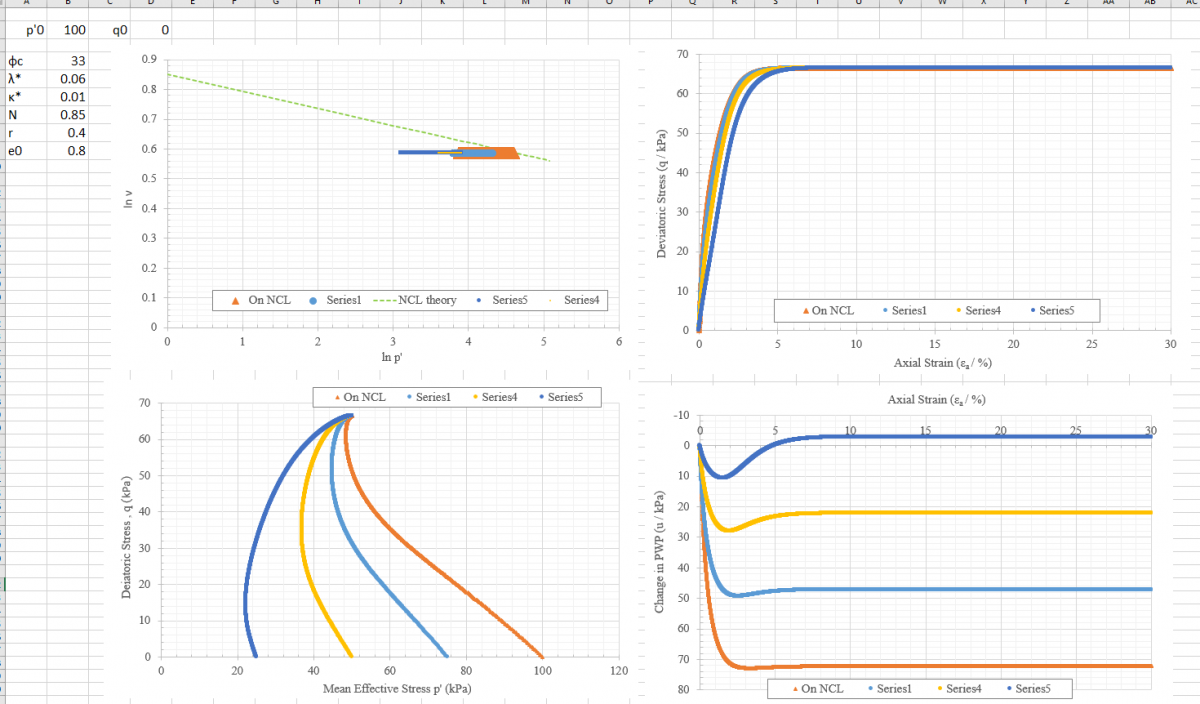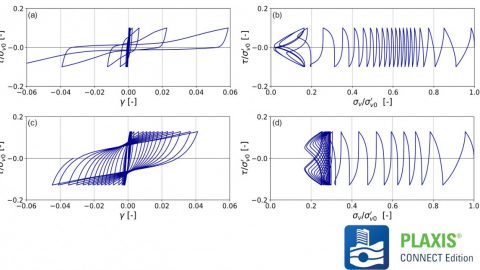I would like to derive material parameters based for a simulation which will implement the hypoplastic material model based on the following information:
• Heavily overconsolidated
• Very dense, fine sand
• In situ preconsolidation pressure of 1 MPa
• Bulk unit weight of 20 kN/m3
• Relative density 100%
• Groundwater table 6 m below piling platform level
• In situ water content ranging between 10-12%
• Degree of saturation = 71%
• D50 (mean particle size) between 0.1 and 0.15 mm
I also have averaged CPT information with friction sleeve and end resistance as a function of depth. Unfortunately I don’t have information about the dimensions of the CPT apparatus used.
I am new to constitutive models and the calibration of their parameters. Therefore I would like to ask, where can I start in terms of calibrating the parameters?
Thanks
Tags: hyposand






Dear Amine,
if you want to work with the Von Wolffersdorff hypoplastic model I would recommend you to read:
I. Herle and G. Gudehus (1999).
Determination of parameters of a hypoplastic constitutive model from properties of grain assemblies.
Mechanics of Cohesive-Frictional Materials, 4(5):461-486.
Maybe you can have also a look to the ExCalibre – Automatic Calibration Software ( https://soilmodels.com/excalibre/ ). As David wrote the EXCalibre will be available in the next weeks.
Best regards,
Henning
Hi Amine,
Henning is right. At least at present, database of hypoplastic parameters is not that complete that you would easily provide some index information about the soil and get the parameters.
You would need some basic laboratory tests like oedometer and triaxial drained test, then you can calibrate the model quite easily. There are few element test driver now available at soil models, or you can wait for ExCalibre.
In any case, if you have a look into Herle and Gudehus 1999 paper, you will get at least some idea about parameter values.
Regards David
Hi Amine,
based on my experience it could be fine to roughly estimate a hypoplastic set of parameters in a first step in order the get a first feeling of the response of the model using a “similar” soil. Also it may be fine to convince a client to carry out some more borings to get undisturbed samples for lab testing. We used this procedure in the course of a project in Duesseldorf, Germany, last year. First report with estimated parameters and final report using calibrated parameters based on lab tests. Please don’t forget to emphasis the limitation and high risk of a calculation without a calibration.
The required lab tests are not expensive but you will need these to demonstrate the quality of your work. Caluclations without a calibration can only be a first step! Results can be fine but you may have no insurance cover in this case.
Regrads
Christian
Hi Amine,
maybe the soil in Berlin is similar to the soil you’ve described. About 10 m below the ground level there is an over-consolidated medium sand caused by glacial cover. I will have a look on literature and some internal documents.
Please don’t forget the increased horizontal earth pressure! There are cases where the stress release (no change in void ratio) may have caused significant horizontal wall deformations. Effect due to partial saturation may be coverd also. Cone-pressuremeter tests may be helpful to calibrate the data set. Final data set has to be verified by lab test using disturbed samples! Thus, this procedure to use disturbed samples is a very big advantage of the hypoplasticity. Transfer to undisturbed behaviour insitu results from the definition of the intergranular strains.
Regards
Christian
Hi Amine,
For many parameters in the hypoplastic models, I think the optimization-based parameter identification method may be a good choice for calibrating them.
You can find the methods in my paper.
Yin, Z.-Y., Jin, Y.-F., Shen, J.S., Hicher, P.-Y.: Optimization techniques for identifying soil parameters in geotechnical engineering: Comparative study and enhancement. Int. J. Numer. Anal. Methods Geomech. 42(1), 70-94 (2018). doi:10.1002/nag.2714
Best regards,
Yinfu
Thanks for your responses. Extremely informative. @Henning I found the Herle and Gudehus paper (1998) most informative, definitely the starting point for me. @Yinfu, thanks for your suggestion, for now I am looking for more approximate correlation methods but I will see what optimization can also offer.
I will come back to you if I have more specific questions, for now I have enough resources to work with.